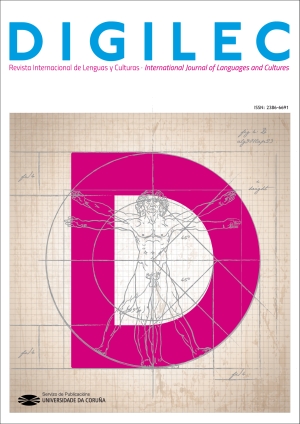Identifying student preferences in online content and language integrated learning courses
Main Article Content
Abstract
Currently in Mexico, 51% of Mexicans who are studying use online platforms and courses. A study was conducted in the Fall of 2019, 162 students’ perceptions in various online Content and Language Integrated Learning courses offered completely in English in a university in Monterrey, Mexico. The purpose of the study was to determine students’ perceptions of the most important and least important components, as well as students’ greatest challenges in taking online courses in a foreign language. The students’ perceptions were categorized into six areas: course organization, interaction with teachers and classmates, ease of navigation, technology, course materials and content, and assessment. Students selected the following as the most important course components: course organization, easily understood content, quality of course materials. The online course components that students selected as the least important were interaction with classmates, videos recorded by the instructor, and course objectives. The study also revealed a weak relationship in the student to student interactions. This study provided the instructor with feedback on the online courses so that the instructor can make future course modifications to increase student success in the online courses.
Keywords:
Downloads
Article Details
References
Arévalo-Balboa, F. & Briesmaster, M. (2018). “Claim – Support – Question” Routine to Foster Coherence within Interactive Oral Communication among EFL Students. Profile. Issues on Teachers’ Professional Development 20(2), 143-160.
Bradford, G.R. (2011). A Relationship Study of Student Satisfaction with Learning Online and Cognitive Load: Initial Results. The Internet and Higher Education, 14(4), 217–226. https://www.sciencedirect.com/science/article/pii/S1096751611000364. [Retrieved on 31/11/2019].
Butler-Pascoe, M. E. (2011). The history of CALL: the intertwining paths of technology and second/foreign language teaching. International Journal of Computer-Assisted Language Learning and Teaching, 1 (1), 16-32.
Center for Online Education. (2019). Online College Students by the Numbers. https://www.onlinecolleges.net/for-students/online-college-students-by-the-numbers. [Retrieved on 01/11/2019].
Crews, T B., Bordonada, T. M. & Wilkinson, K. (2017). Student feedback on quality matters standards for online course design. Educause Review. https://er.educause.edu/articles/2017/6/student-feedback-on-quality-matters-standards-for-online-course-design. [Retrieved on 09/09/2019].
ELT Think Tank. (2018). How to use student feedback to improve teaching? https://eltthinktank.com/how-to-use-student-feedback-to-improve-teaching. [Retrieved on 05/09/2019].
Jaggars, S.S. & Xu, D. (2016). How do online course design features influence student performance? Computers & Education, 95, 270-284.
Kentor, H. (2015). Distance education and the evolution of online learning in the United States. Curriculum and Teaching Dialogue, 17, 21-34.
Morville, P. (2005). Ambient findability. Sebastopol: OReilly.
Muilenburg, L. Y. & Berge, Z. L. (2007). Student Barriers to Online Learning: A Factor Analytic Study. Journal of Distance Education, 26(1), 29–48. http://citeseerx.ist.psu.edu/viewdoc/download?doi=10.1.1.88.2865&rep=rep1&type=pdf. [Retrieved on 12/12/2019].
Ortega, O. (2018). El 51% de los estudiantes en Mexico utilizan plataformas en línea. El Financiero. https://www.elfinanciero.com.mx/tech/51-de-los-estudiantes-en-mexico-utilizan-plataformas-en-linea. [Retrieved on 01/11/2019].
Quality Matters Program. (2018). Quality Matters Higher Education Course Design Rubric. https://www.qualitymatters.org/qa-resources/rubric-standards/higher-ed-rubric. [Retrieved on 01/10/2019].
Radford, A. W. (n.d.). Learning at a Distance: Undergraduate Enrollment in Distance Education Courses and Degree Programs. Stats in Brief. Nces 2012-154. https://nces.ed.gov/pubsearch/pubsinfo.asp?pubid=2012154. [Retrieved on 01/10/2019].
Smyth, L. (2019). Using Student Feedback to Create Effective Online Learning Experiences. https://edservices.wiley.com/how-student-feedback-creates-better-online-learning. [Retrieved on 31/10/2019].
Southern Oregon University. (2009). Southern Oregon University Best Practices in Online Course Design and Delivery. Ashland, Oregon: SOU.
Vonderwill, S. (2003). An Examination of Asynchronous Communication Experiences and Perspectives of Students in an Online Course: A Case Study. The Internet and Higher Education, 6(1), 77–90; DOI: https://doi.org/10.1016/S1096-7516(02)00164-1.
Warschauer, M. (1996). Computer-assisted language learning: An introduction. In S. Fotos (Ed.), Multimedia language teaching (pp. 3-20). Tokyo: Logos International.

